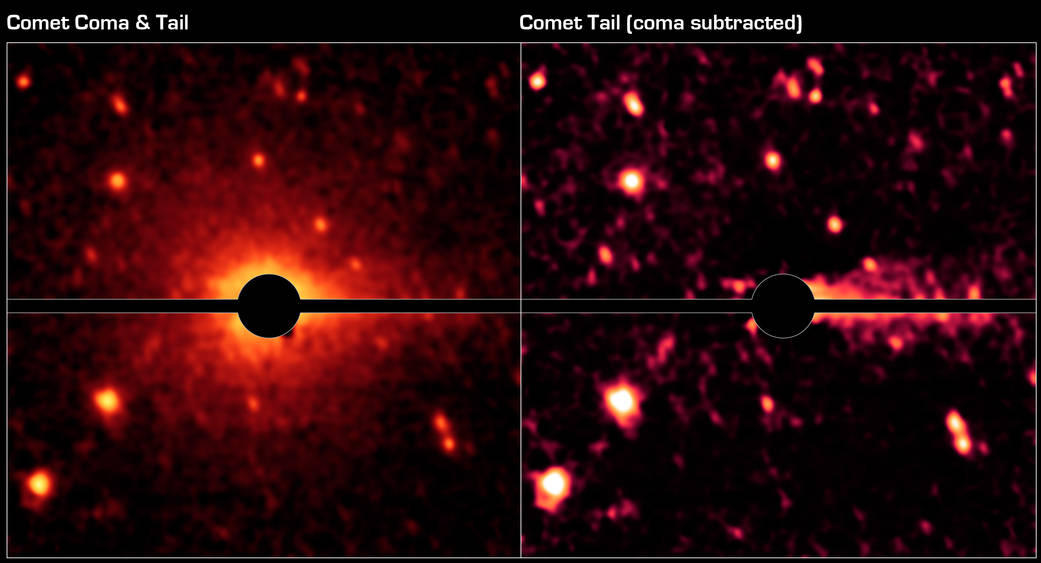With the help of NASA’s Spitzer Space Telescope, astronomers have discovered that what was thought to be a large asteroid called Don Quixote is in fact a comet.
The left image shows Don Quixote’s coma and tail — features of comets — as revealed in infrared light by Spitzer. The coma appears as a faint glow around the center of the body, caused by dust and gas. The tail, which appears more clearly in the right image, points towards the right-hand side of Don Quixote, into the direction opposite of the sun.
The right image represents a more elaborate image processing step, in which the glow of the coma has been removed based on a model comet coma.
Bright speckles around Don Quixote are background stars; the horizontal bar covers image artifacts caused by the image processing.
Image credit: NASA/JPL-Caltech/DLR/NAU



























